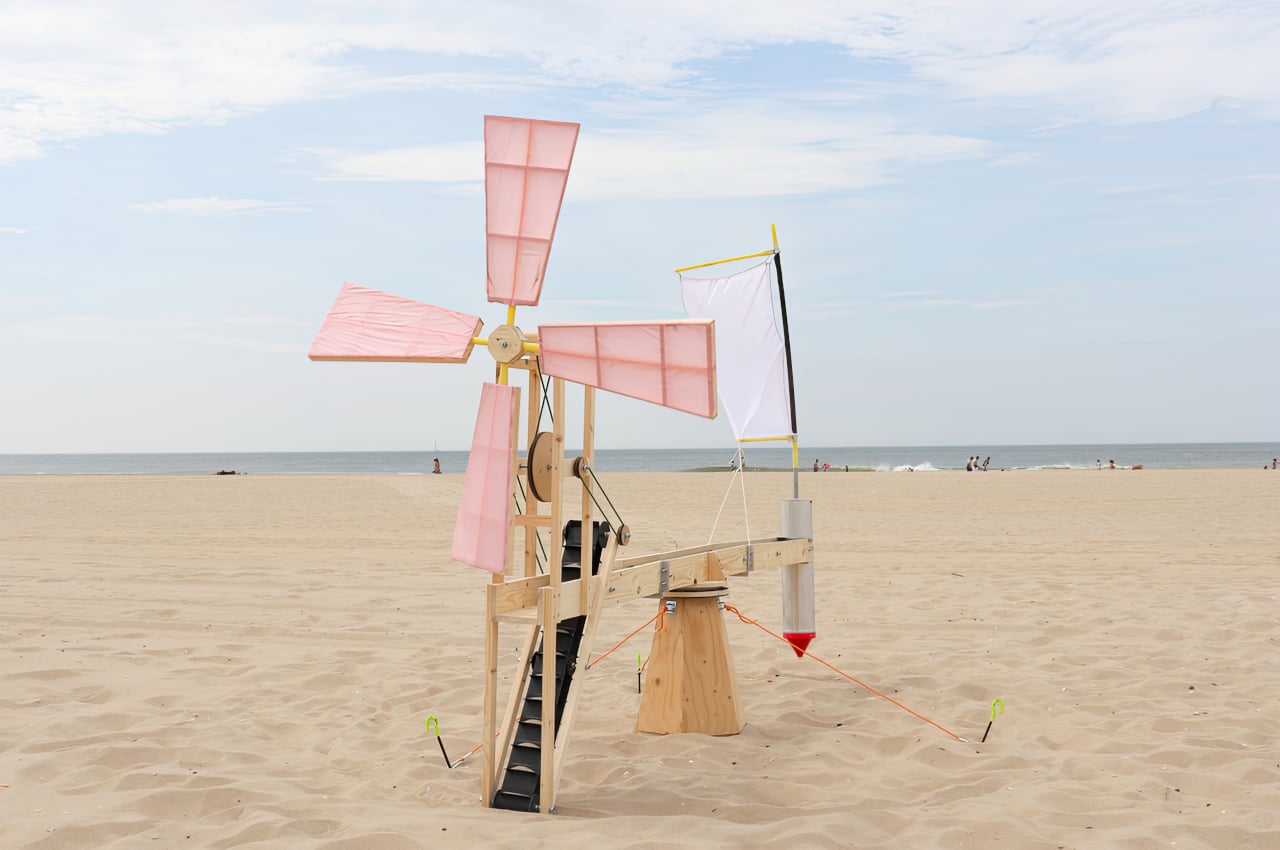
Wind turbines are currently in popular demand due to the growing necessity of green energy, but there’s a deep sense of calm involved in watching a much less advanced windmill for the land (turn forever, hand in hand). That’s the idea behind the W.I.P.: Windmill In Play installation by Taiyi Yu, a graduate student in industrial design at the Royal Academy of Art, The Hague, Netherlands.
Windmill In Play is a deconstructed windmill, meaning it takes the classic windmill design and simplifies it using everyday parts that make it easy to build and deploy. You can watch the process of constructing Taiyi Yu’s handmade DIY windmill design in the video linked below, meaning anyone with the time and energy can learn to build one of their own.
Designer: Taiyi Yu
As the windmill turns, it physically powers a series of mechanisms that shuffle sand from the base of the installation into a hopper that gradually displaces the collected sand in a unique shape as the wind moves the windmill around its 360-degree radius.
Most of the materials used in the Windmill In Play design are simple to work with – like wood, fabric, and piping – and it appears that they’re mostly recycled materials sourced directly from the trash. An especially impressive part of the design is the pink sail fabric, sourced and cut from old umbrellas as seen in the construction video.
Windmill In Play is not just a cool science project that creates a potential outlet for recycled materials. According to designer Taiyi Yu, it serves an artistic purpose as well, saying, “The project questions how winds have been harvested through windmills and reflects on how we perceive and appropriate winds.”
“The windmill, as a concrete example but also as a metaphor for modern industrialisation, is implicated in the dichotomy between humans and nature. It exemplifies the rationality of seeing the natural world as a resource, a power that reconstitutes experience through its mechanical structure.”
Even though the windmill itself isn’t designed to produce electricity, it could serve as a direct example of what’s possible with everyday materials – and hopefully, it could become a starting point for even more designers and creators who want to develop their own green energy solutions.
